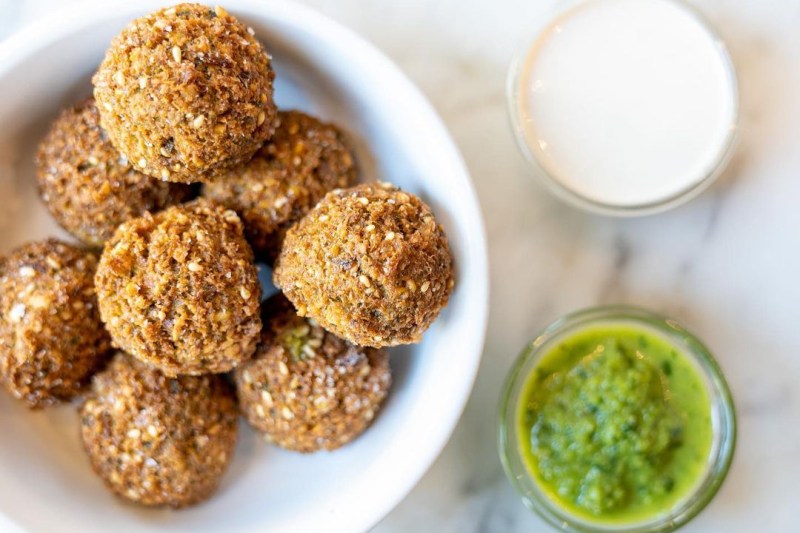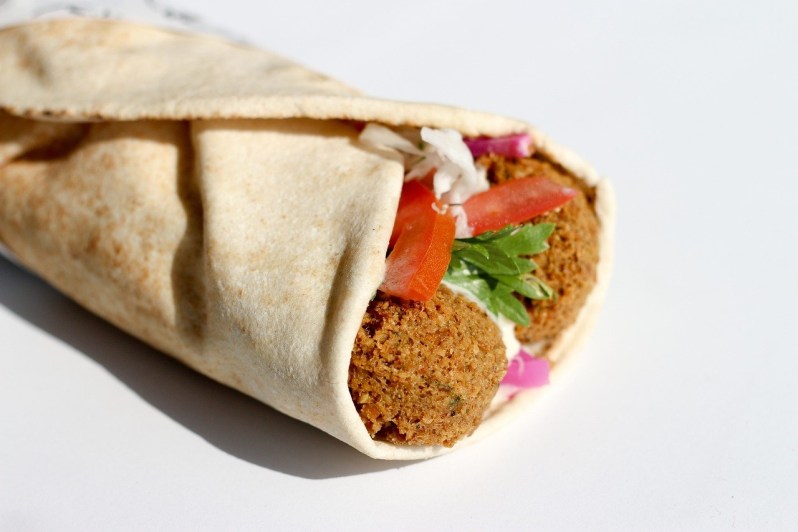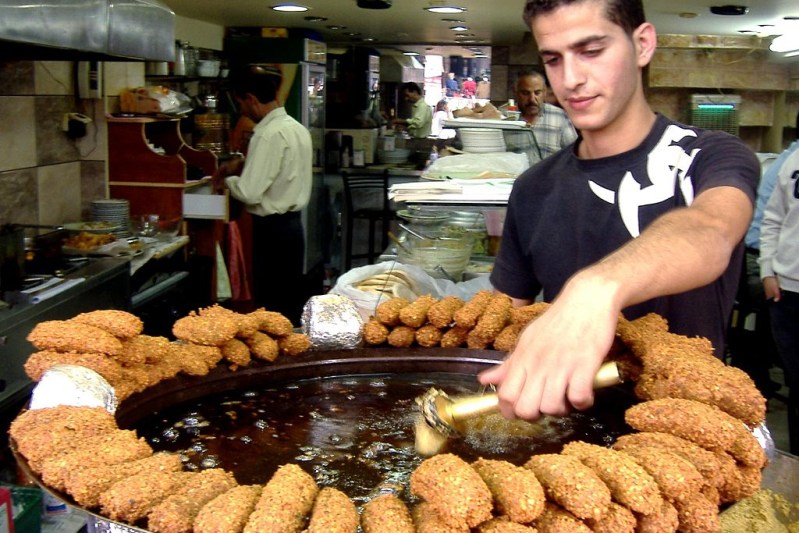Beloved throughout the Middle East, falafel is a deep-fried dish that’s become an incredibly popular international cuisine. It’s also one hundred percent vegan and one of the best recipes to satisfy both carnivores and vegetarians.
Shalom Y’all Falafel Recipe

(By Chef Kasey Mills of Shalom Y’all in Portland, Oregon)
Kasey Mills is the co-owner and executive chef of Sesame Collective restaurant group in Portland, Oregon, whose restaurants include Shalom Y’all, Mediterranean Exploration Company, Yalla, and Bless Your Heart Burgers.
Ingredients:
- 1 qt chickpeas (soaked over night)
- 1 bunch parsley rough chopped
- 1 bunch mint rough chopped
- 1/2 red onion small diced
- 1 tbs whole coriander seed
- 2 tbs white sesame seeds
- 2 tbs ground coriander
- 1 tbs ground cumin
- 1 tsp cayenne
- 1 tbs baking powder
- 2 tbs salt
Method:
- Add chickpeas, parsley, mint, and whole coriander to a food processor and roughly pulse till the mixture is ground and is sticking together.
- From there, take the mixture out of the food processor and place in a bowl. Add the rest of the ingredients and mix until everything is fully incorporated. Let sit for at least a half hour or overnight.
- To cook, heat up oil to 325 degrees Fahrenheit. Use a candy thermometer to get the temperature right.
- Using a one ounce ice cream scoop, add the mixture to the oil and fry for 3 minutes.
- Once the time is up, use a slotted spoon to pull the falafel out and set onside on a plate lined with cloth to catch the excess grease.
- Let the falafel sit for one minute before serving. When it comes to falafel, the fresher the better.
The Origins of Falafel

Most scholars believe falafel originated in Egypt. Although often considered a Coptic Christian invention for meatless Lent, most historians believe there is no evidence to this theory. Instead, falafel is a relatively modern dish. The first mention of falafel in Egyptian literature does not appear until after the British occupation in 1882.
Related Guides
Falafel is a contentious subject in some parts of the Middle East. Despite falafel’s current popularity in Israel, the country’s relationship to falafel is complex. For the native Jewish population in the Middle East, falafel was widely eaten alongside their Arab neighbors. It wasn’t until the arrival of Jews from majority Arab nations in North Africa, Yemen, and elsewhere, where falafel was popular, that the dish was embraced by most Israelis.
Falafel Variations

As falafel spread throughout the Middle East, unique regional variations started to appear. Instead of chickpeas, Egyptian falafel, called ta’miyya, is made from fava beans. It’s also possible that falafel was named after the Egyptian dish of stewed fava beans known as fūl.
Falafel also appears in many shapes, ranging from round balls to patties. In Palestine, some shops make their falafel into long oval shapes. In Lebanon, falafel is sometimes made with both chickpeas and fava beans. Falafel will often be vibrant green, the result of a parsley, cilantro, and onion mixture. Spices can vary depending on both shop and country, ranging from cumin to sesame seeds and beyond.
Sauces and Accompaniments
Falafel can be served by itself or in a sandwich. When served by itself, falafel will often be served with hummus and a plate of raw and pickled vegetables (turnips, cucumbers, cauliflower). In sandwich form, falafel is either served in a pita or laffa, a flat bread rolled into the shape of a burrito. Common sauces for falafel sandwiches include fragrant tahini sesame and shatta, a hot sauce made with crushed chili peppers and herbs. Amba, a spicy, pickled mango sauce accompaniment, is originally from India and is popular in both Iraq and Israel.



